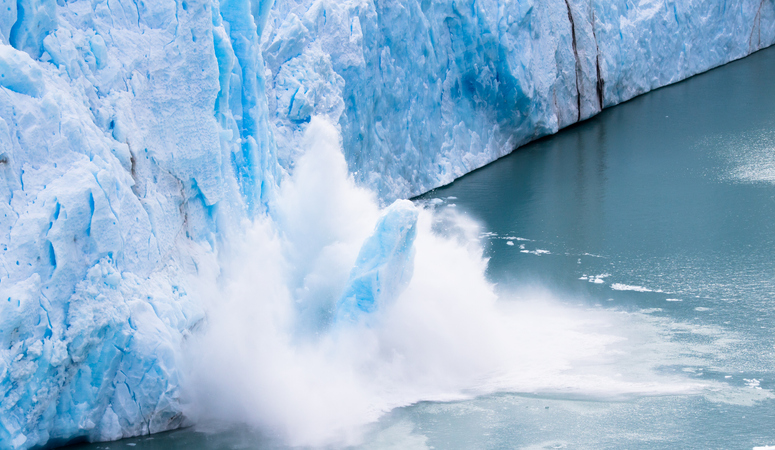Antarctica’s Thwaites Glacier, coined as the ‘doomsday glacier’, would cause ocean levels to rise by roughly 25 inches if it were to melt entirely. The glacier has been melting rapidly, scientists say, contributing to an estimated 4 percent of annual sea level rise thus far.
Stanford research published in March used geophysical models to examine the mechanics of the glacier’s movement and melting. Paul Summers, a fifth-year Ph.D. student in geophysics and first author on this paper, found that the unique topography around and beneath Thwaites contributes to glacial widening and glacial retreat.
Summers spoke about the relationship between modeling and accuracy in research results, saying, “Models make an effort to try and understand the physical processes at play, to enable us to make longer, farther forward-looking models that are also more accurate.”
Dustin Schroeder, a radio glaciologist and associate professor of geophysics and electrical engineering at Stanford who previously worked with Summers, called Thwaites, “one of the fastest-changing, mass-losing glaciers in Antarctica and the world.” He said that Thwaites is especially interesting because it shares a shear margin with Pine Island Glacier, which has the potential to raise sea levels by 59 inches within 1000-2000 years.
Schroeder’s work focuses on using radar systems to monitor the subsurface changes in glaciers to better understand their past and present states. However, according to Schroeder, observations are constrained to the history of the geography. “If you want to take the insights into the physical processes that we see now, and then comment on the future, you usually need models to do that,” Schroeder said.
According to Summers, Thwaites is not bounded by topography, so the glacial widening is caused by ice freely flowing outwards. “Ice itself flows like a viscous fluid,” said Summers. “If you were to pour a bunch of corn syrup on your table, it would flow outwards under its own gravity, and its own weight. There’s a similar thing happening for Antarctica with all of the ice oozing its way to the coast.” This glacial widening will contribute to increased glacial melting, Summers said, since it means more surface area for the sun to hit.
According to Summers, irreversible glacial retreat occurs when a glacier gets so small and retreats so much that, for example, “you’d have to go through a whole other Ice Age,” to return the glacier to its previous state. Summers noted that irreversible glacial retreat is something scientists are concerned about at Thwaites because the topography of the ground beneath the glacier slopes down, meaning ice gets thicker as you move inland. When does retreat become irreversible? “There’s kind of a consensus that there is a tipping point,” said Summers, but he clarified that where that tipping point is remains a subject for scientific inquiry.
According to Summers, narrow research into glacier melting and behavior can help to begin answering questions about an irreversible retreat. “[It gives] us more confidence about one physical process and how it might contribute to accelerating runaway collapse,” Summers said.
Summers described the process of receiving peer reviews and said that it took some time to find the balance between confidence in his own work and accepting the criticisms of peer scientists. “Some of the strongest parts of the paper came out of this peer review process,” said Summers. “At the same time, it’s really hard to get feedback, because you get this feedback that’s been drafted by three of your peers … You get this document that’s like literally 100 issues, line by line with your paper.”
Brent Minchew, professor of geophysics at MIT, commented that the researchers are successful at “reduc[ing] the complexity of the model, down to the point that you capture only the essential pieces that still do a very good job.” According to Minchew, devising a stripped-down model allows geophysical factors at play to be isolated, making it less difficult to determine which are the most influential.
When asked how this research impacts the ordinary citizen, Schroeder said that city leaders and planners need to be informed about sea level rise in their policy-making. “There’s a ton of uncertainty on the rate of the level rise, and it makes it extremely hard to plan thoughtfully in these ways,” Schroeder said. “The better we understand these physical processes, the better numbers we can have, and the better numbers we have, the better you can plan. That’s the large scale project.”
